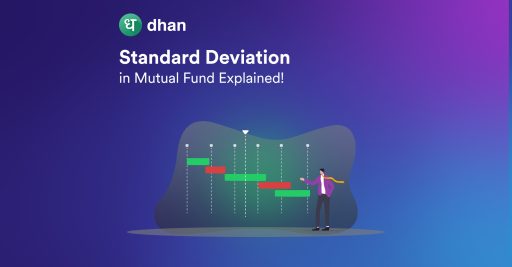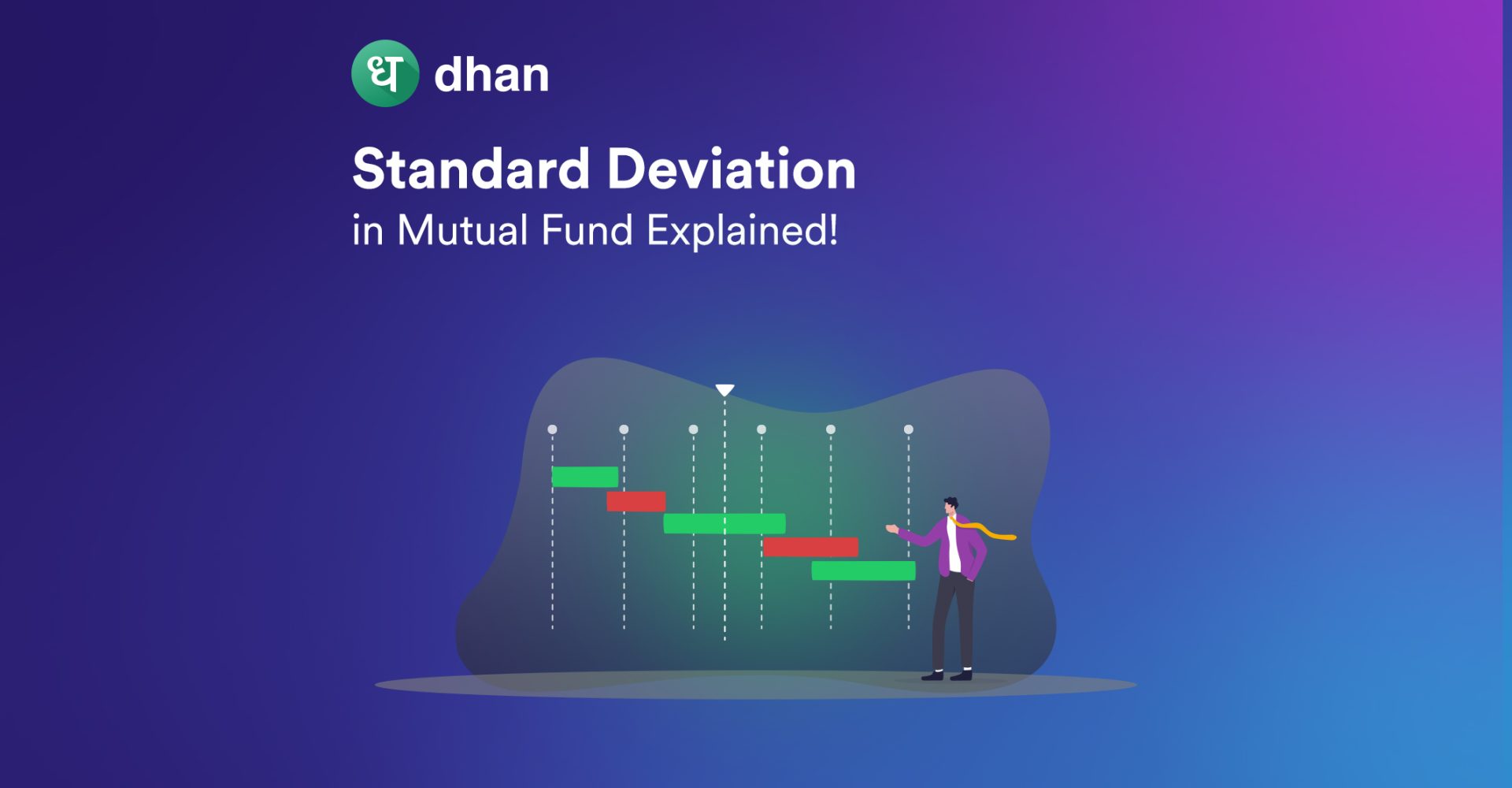Mutual funds have attained prominence among investors in recent years. But investing in mutual funds isn’t as simple as it sounds.
You may be surprised to learn that there are numerous plans accessible in the market. These schemes are classified according to sector, asset type, and tax benefits.
You should undertake extensive research using financial tools to choose the fund that best matches your risk tolerance. Here is where standard deviation can help.
In this article, we will discuss what is standard deviation in mutual funds and its importance.
What is Standard Deviation in Mutual Funds?
Standard deviation is a statistical measure illustrating the amount of variability or dispersion around an average.
In mutual funds, it indicates how much the return on the fund deviates from the expected average returns over a certain period.
To understand how standard deviation works, let’s take an illustration.
Suppose a mutual fund has an average return of 10% over time. If the standard deviation is 5%, the actual returns could fall between 5% and 15%.
A higher standard deviation implies a broader dispersion of returns. It suggests higher volatility and, therefore, higher risk.
Conversely, a lower standard deviation signifies that the returns are more clustered around the average, implying lower volatility and risk.
Relevance of Standard Deviations in Mutual Funds
Here is why it is recommended to use standard deviations in mutual funds.
- It is better than beta because it accounts for market-related volatility as well, instead of only considering volatility.
- You can use it to compute the variance of the returns for debt and equity schemes.
- Using the standard deviation, you can align a mutual fund’s volatility with your risk appetite.
- This tool is ideal for contrasting two or more funds from the same category. If there is much deviation, it indicates that your fund operates differently than others, either for good or for bad.
Standard Deviations Formula
To determine standard deviation, you can utilize the following formula.
Where:
- ( R_i ) = Individual return in a period
- ( R_{avg} ) = Average return over all periods
- ( N ) = Total number of periods
How to Compute Standard Deviation?
You can compute the standard deviation of any mutual fund scheme by using the following steps:
- Step 1: Gather the historical return data of the mutual fund for a specific period.
- Step 2: Compute the mutual fund’s average (mean) return over the collected period. This is the expected return of the fund.
- Step 3: Calculate the deviation of the actual return from the average return for each period. You can do this by subtracting the average return from each return.
- Step 4: Square each deviation obtained in the previous step to eliminate negative values and focus on larger deviations.
- Step 5: Add up all the squared deviations. This total represents the overall variance from the average return.
- Step 6: Divide the sum of squared deviations by the number of periods minus one (N-1) to calculate the variance. This step accounts for the sample size in your data set.
- Step 7: Finally, take the square root of the variance to obtain the standard deviation.
Example of Standard Deviation Computation
Here is a mathematical example to help you get this concept better.
| Year | Annual Return or X | Mean Deviation (X – X̅) | (X – X̅)2 |
| 1st Year | 15 | 4.60 | 21.16 |
| 2nd Year | 12 | 1.60 | 2.56 |
| 3rd Year | 20 | 9.60 | 92.16 |
| 4th Year | -5 | -15.40 | 237.16 |
| 5th Year | 10 | -0.40 | 0.16 |
Here,
- Mean (X̅) = 10.4
- n-1 = 4
- Variance = 88.3
- Σ(X – X̅)2 = 353.20
- Standard Deviation = 9.40 (Variance Square Root)
Drawbacks Of Standard Deviation
Standard deviation in mutual fund schemes is not without downside. Here is the rationale for the same.
- Standard deviation assumes that returns are normally distributed. It follows a bell-shaped curve. This assumption rarely holds in financial markets, which can exhibit skewed or fat-tailed distributions. Therefore, it may underestimate the likelihood of extreme returns, both positive and negative.
- It treats all deviations from the mean—above or below—equally risky. This does not align with the typical investor’s perspective, who may view positive deviations (higher returns) as desirable and negative deviations (lower returns) as actual risk.
- Standard deviation is a backward-looking measure. It relies on historical data. Since market conditions can change rapidly, past volatility is an unreliable indicator of future risks.
Conclusion
In conclusion, understanding the standard deviation in mutual funds is crucial for investors navigating the complex world of investment choices.
It helps investors gauge the variability of returns around an average, indicating the level of risk involved.
While it is a valuable tool, it is not without limitations, particularly its reliance on past data and assumptions about distribution patterns.
Nonetheless, when used cautiously, standard deviation can aid investors in making more informed decisions about their mutual fund investments.




